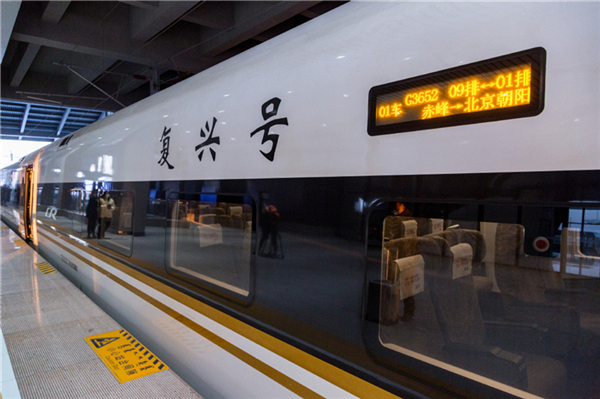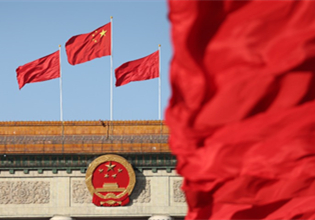Inner Mongolia infrastructure construction hits new heights

High-speed trains are now running between Beijing's Chaoyang Station and Chifeng Station in the Inner Mongolia autonomous region. They started operating on Jan 22. [Photo by Xu Yingjia/For chinadaily.com.cn]
A smooth, convenient and fast transportation network took shape in North China's Inner Mongolia autonomous region during the 13th Five-Year Plan period (2016-20).
From 2016 to 2020, the total investment in the construction of transportation infrastructure in the region was about 448.5 billion yuan ($70.26 billion) and it was full steam ahead for the construction of railways, highways and civil aviation.
By the end of 2020, the total mileage of the high-speed railway network in the region amounted to 404 kilometers.
One highlight was the Zhangjiakou-Hohhot High-speed Railway or HSR, which opened in August 2017, connecting the region's capital city Hohhot to Zhangjiakou city in North China's Hebei province.
The opening of the Zhangjiakou-Hohhot HSR put an end to the era when Inner Mongolia had no access to high-speed rail.
From 2016 to 2020, the region completed construction of the Inner Mongolia section of the Beijing-Xinjiang Expressway, which is understood to be the world's longest desert expressway.
The total mileage of expressways in the region during the period reached 6,985 km. In so doing, the region realized the coverage of first-class and above expressways in its banners and counties, coverage of second-class and above expressways at all land ports, as well as first-class expressways at the important land ports.
Meanwhile, the total number of civil airports in Inner Mongolia grew to 40, an increase of 15 compared with the close of the 12th Five-Year Plan period (2010-15). As a result, all 12 cities and leagues in Inner Mongolia got access to civil airports.
In addition to improvements in the transport sector, Inner Mongolia has striven to make up ground on its construction of public utilities – water, power, heating and the like – with the supply capacity of cities and towns in the region significantly enhanced.
Since 2016, the region has completed a total investment of 250 billion yuan in urban infrastructure construction.
The region's urban facilities indicators have also reportedly continued to improve in the national rankings. Such measures as the urban water supply rate, per capita area of urban roads, built-up roads area rate, sewage treatment rate and per capita area of green parks – as well as the treatment rate of domestic garbage – are now all higher than the national average.



 Print
Print Mail
Mail





